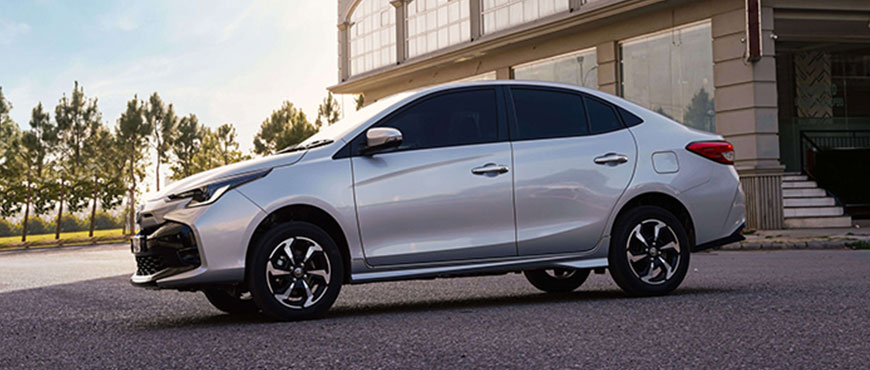
Push starting a manual car works quite well. The reason is that the clutch allows the engine to engage as the wheels turn. Automatic vehicles are different. They rely on hydraulic systems with a torque converter instead of a clutch. Hence, you cannot engage their engine manually by pushing the vehicle forward because the transmission will not engage.
This is why many people are sometimes hesitant to drive automatic cars in Pakistan during the monsoon and in adverse weather conditions. They rely on electronic components, and even the slightest of moisture or damage to these components can create a myriad of worries.
It can be quite a stressful situation if the car’s battery is dead and no jumper cables are available. Push starting (aka bump starting) is a common technique of starting most vehicles in case of a dead battery. But with automatic cars, it’s a different story. Hence, understanding the correct method of starting cars is essential to avoid damaging the engine and other parts.
Knowing the correct tips for push-starting cars with automatic transmissions is useful, especially when there is no mechanic or a nearby workshop.
It is not possible to push-start an automatic car in most instances, like a car with a manual transmission. Push starting is also known as bump starting (and jump starting). The technique typically involves moving a manual transmission car forward (pushing it) as the clutch engages to start the engine. This is where the automatic and manual car difference comes into play.
Cars with automatic transmission rely on torque converters. It functions as a fluid coupling, enabling the engine to run even when the vehicle is stationary. The clutch doesn’t have to be engaged, but it also means the car cannot start by pushing it forward.
Let’s now examine practical tips for starting a car with an automatic transmission that has a dead battery.
One alternative way to push-start an automatic car is to jump-start the battery. Find jumper cables and connect the battery of your automatic car to that of another vehicle. Ask them to start and give some acceleration in neutral or park gear to give the battery some power so it can start your car.
If the previous method does not work, it indicates that the battery is completely dead. Most car batteries last between three and five years. If the car does not jump-start, then it is wise to replace the old battery with a new one.
If your car makes a clicking sound but won’t start, then the starter motor is likely faulty. It should hence be replaced.
Automatic cars indeed have a neutral safety switch. They prevent the car from starting unless it is in either Park (P) or Neutral (N) gear. If the switch is faulty, the vehicle will not start, even if the battery is functioning correctly. It is wise to shift the car into Neutral and then start it again.
Roadside assistance is a lifesaver when all the methods mentioned above fail. Additionally, a warranty that covers breakdowns and towing expenses for the car is also beneficial. If a mechanic is nearby, they can also assist.
In case car owners are wondering how to start an automatic car without a key, then they should know that they can only start it with a key.
Push-button start in cars is indeed a blessing. Their convenience is undeniable, and car owners can simply start their beloved machine with the push of a button. But like most advanced technological systems, they are never immune to any problems.
Yup, a simple car push-button start problem can leave car owners stranded in the middle of the road or the parking lot. When the engine does not crank with the push of a button, then it indicates that a serious problem exists.
The first suspect is a weak car battery (or a dead one). Typically, keys can still start the car engine with a low battery thanks to the mechanical systems involved. However, push-button systems are electronic, and they require a certain voltage to run. Otherwise, they won’t work.
Then there is an issue with the key fob itself. If the fob’s internal battery isn’t working, then the car’s system will not detect it (even if it is physically present). This will prevent the car from starting. At times, interference from other electronic components or devices can cause issues. An obvious issue to blame is a faulty key fob sensor.
Another fault that is possible despite its low probability is issues with the brake pedal switch. It needs to be engaged for safety reasons. A faulty starter motor on the car’s central alarm system is also to blame in case it arises.
Indeed, these faults are disadvantages of push-button start in cars. But there are ways to fix it. It requires checking the state of the FOB’s battery. Observing dashboard warning lights is important, too. Once these issues are understood, they can help car owners diagnose problems easily and even explain the same to a car mechanic.
An automatic car is very good, but like most cars, it has its own set of pros and cons. These cars are mostly electronically operated, with electronic sensors instead of mechanical components. If they are down, then it is best to get them checked immediately. Also, if the weather is rainy, then it is wise to take such cars out if the situation makes it necessary.
30C / II - 24th Street D.H.A Phase II Extension Phase 2 Commercial Area, Karachi, Sindh
Rentals@deinfa.com
+92 331 3334632
+92 321 8291537
© 2025. All Rights Reserved by Deinfa. | Developed by: Digital Eggheads.
Starting from five vehicles and growing to a fleet of over 500, Deinfa has become a renowned name in the car rental industry.